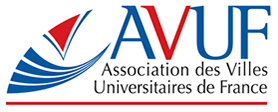Since Facebook was the brainchild of a Harvard student, why shouldn't other schools gain from developing their own social networks? Salesforce, the company behind the Dreamforce Convention, is the world leader in cloud computing and offers universities a wide range of online services to do just this.
According to Sandra Sanvido, Director of Higher Education Product Marketing at Salesforce, "One of the biggest problems for American schools is student retention. Over one-third of them change schools from one year to the next. So schools have to adapt to the needs of their students, who we are not afraid to call their clients." In Europe as in the U.S., government funding is down. In order to maintain their services, universities have no choice but to raise funds and double their student retention efforts.
RECRUITING RIGHT
Naturally schools use student rankings to handpick top candidates. However, school websites and college fairs play a large role as well. Roger Lurie, Executive Director of Information Systems Development at Arizona State University (ASU), explains, "We developed an application that allows us to see when prospective students read our messages and how long it takes them to reply. Then, using a single screen interface, we can reply via the same social media platform the student used."
The school has also implemented a social media keyword monitoring system. For Assistant Vice President of Development Leah Lommel, "When someone posts a negative comment, you can choose to ignore it or respond to it. Either way, it should push you to improve the part of your school that was criticized."
MAXIMIZING RETENTION
Foreign students at ASU have their own social network. Each of the 200 students enrolled in the American English and Culture Program can refer to the site for information on degree completion and coursework. Mark Kaech, Business Analyst Associate at ASU, explains, "There is also an FAQ section. Students can use the site to find the closest laundromat or a hotel for visitors." ASU's application has been a success, contributing to an 85% student retention rate in its first year.
Kaech states, "ASU students and professors use social media to communicate rather than e-mail. Before when we sent out group e-mails to professors, sometimes we would forget to mention a situation with one of the students. Now all our professors have access to student profiles. Also, they can read the exchanges between other professors and students."
REMOTE TEACHING IN REAL TIME
These online communities are designed for students and professors alike. In 2012, Southern New Hampshire University (SNHU) created College for America, a distance learning Bachelor's degree program. Working adults earn credit for their existing competencies rather than taking a fixed set of courses. David MacWhinnie, Principal Product Manager at SNHU, explains, "Professors have to respond to students within 48 hours of receiving their work. Average response time is 29 hours. We can also see how often students visit the site to assess how diligent they are."
FRUITFUL FUNDRAISING
Schools that use social networks also increase their fundraising's effectiveness. Faced with shrinking government funding, American colleges and universities have been forced to rethink their private fundraising programs.
Development staff at Worcester Polytechnic Institute, for example, have to raise an additional $200 million over the next five years. Thanks to its new platform, Worcester can track fundraising in real time. The advancement office can see the progress made by the 12 staff members toward achieving their goals. Cheryl-Ann Cerny, Senior Director of Advancement Information Management and Research, explains, "The site saves time so we can focus on fundraising. That said, it's not enough to buy the software. You have to train your staff and rethink your division of labor." This is not the last we will see of social networks on American campuses, or on European campuses for that matter.






